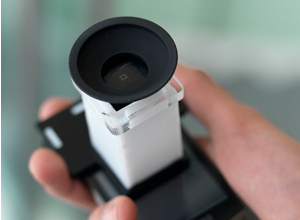Last year, the Cleveland Clinic predicted what the Top 10 innovations in healthcare for 2012 would be. Before we report on the Cleveland Clinic’s predictions for 2013, let’s review how well the Top 10 Innovations for this year actually fared:
Last year, the Cleveland Clinic predicted what the Top 10 innovations in healthcare for 2012 would be. Before we report on the Cleveland Clinic’s predictions for 2013, let’s review how well the Top 10 Innovations for this year actually fared:
- Catheter-based renal denervation for resistant hypertension—Five companies are manufacturing the devices, which are now available in Europe and are under study in the U.S.
- CT scans for early detection of lung cancer—New practice guidelines recommend screening using low-dose CT scans for people at high risk of developing lung cancer and can only be performed in experienced facilities. The cost? About $100 per screening (not covered by insurance).
- Concussion management for athletes—The Cleveland Clinic is developing a concussion app for use in high schools that checks athletes’ memory, reaction time, and balance and compares scores to previous data points.
- Mobile health devices and apps—This is now an area of enormous growth, with more than 40,000 mobile apps related to health and wellness. The FDA recently released draft guidelines for apps that make medical claims. At Popper and Company, we added Paul Sonnier to our team as head of digital health strategy, due in part to our recognition that mobile and other technologies from other industries have become incorporated into healthcare.
- Next-generation sequencing—This technology has expanded into pathology laboratories with a small footprint and low cost. As the price of sequencing and the speed at which sequencing can occur both drop, look for handheld devices to hit the market next year that will have the ability to sequence the genome in 15 minutes.
- Implantable device for complex brain aneurysms—An FDA-approved device that reconstructs blood vessels in the brain is gaining traction over older coil and stent technologies.
- Active bionic prosthesis—Limb prosthetics are improving thanks to better materials and advancements that allow lighter limbs, and increased activity and stability. The first exoskeleton device was available this year for paraplegics, for over $100,000. However, insurance companies currently pay only for basic prosthetics.
- Big data—This will become the norm in managing patients, due in part to the Affordable Care Act and the implementation of electronic health records.
- Diabetes Therapy—SGLT2 Inhibitors (sodium-glucose co-transporter 2 protein) rid glucose by excreting it in the urine. They also lower A1C levels but the FDA rejected the drug application for dapagliflozin, an experimental drug being studied by Bristol-Myers Squibb in partnership with AstraZeneca, due to concern over side effects and requested more data. The European Commission approved the drug.
- Genetically modified mosquitoes—The U.S. Department of Agriculture is considering the release of millions of GM mosquitoes in Florida but citizen protests touting fears of disrupting the food chain have involved the FDA.
While there have been more than a few stumbling blocks, a few trends are clear: mobile apps and more accessible electronic records are a growing phenomenon, and devices are becoming more flexible, light, and more often than not, implantable. And so what’s to come in the year ahead? In my next post, I’ll look at the Cleveland Clinic’s predictions for 2013.
Do you think these were the top 10 healthcare innovations for 2012? Were there others more worthy of the list? What trends do you see? How do they impact your medical device or diagnostics business? What can life science leaders to do keep up with these trends? Let me know your thoughts.








